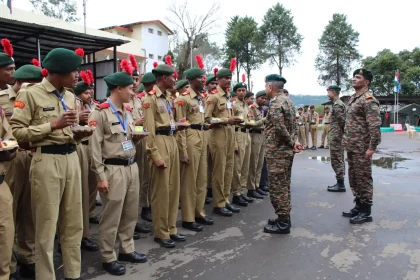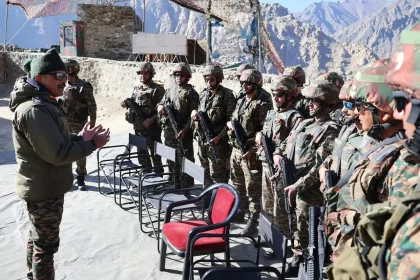Trailer for War Film “120 Bahadur” Released Amid Praise from Bollywood Stars
"120 Bahadur" is scheduled for theatrical release on November 21, 2025.
NCC NER Trek-II Camp Begins in Wokha, Nagaland — A First-of-Its-Kind Celebration of Adventure, Culture, and National Integration
510 cadets from across India embark on an eight-day journey of endurance, discovery, and unity in the heart of Nagaland.
Lt Gen Hitesh Bhalla Reviews Operational Readiness in Batalik and Kargil Sectors; Commends Troops for Exemplary Commitment
Fire and Fury Corps Commander Reviews Security in Kargil and Batalik; Lauds Troops for High Morale and Steadfast Dedication in…
Officer Cadets from Indian Military Academy Witness Drone Warfare Training at Maharajke Drone Node
IMA Cadets Explore Drone Warfare Training at Maharajke Node, Witness Integration of Cutting-Edge Technology into Modern Combat.
Who Is Major Vikrant Kumar Jaitly and Why Was He Detained in the UAE?
While Major Vikrant Kumar Jaitly's detention appears tied to national security concerns amid his UAE-based career, the lack of specifics…
Lt Gen R.C. Tiwari Reviews Operational Preparedness at Kishanganj Military Camp, Commends Troops for Professionalism and High Morale
Army Commander Reviews Readiness at Kishanganj Camp; Praises Troops’ Dedication and Operational Vigilance.






